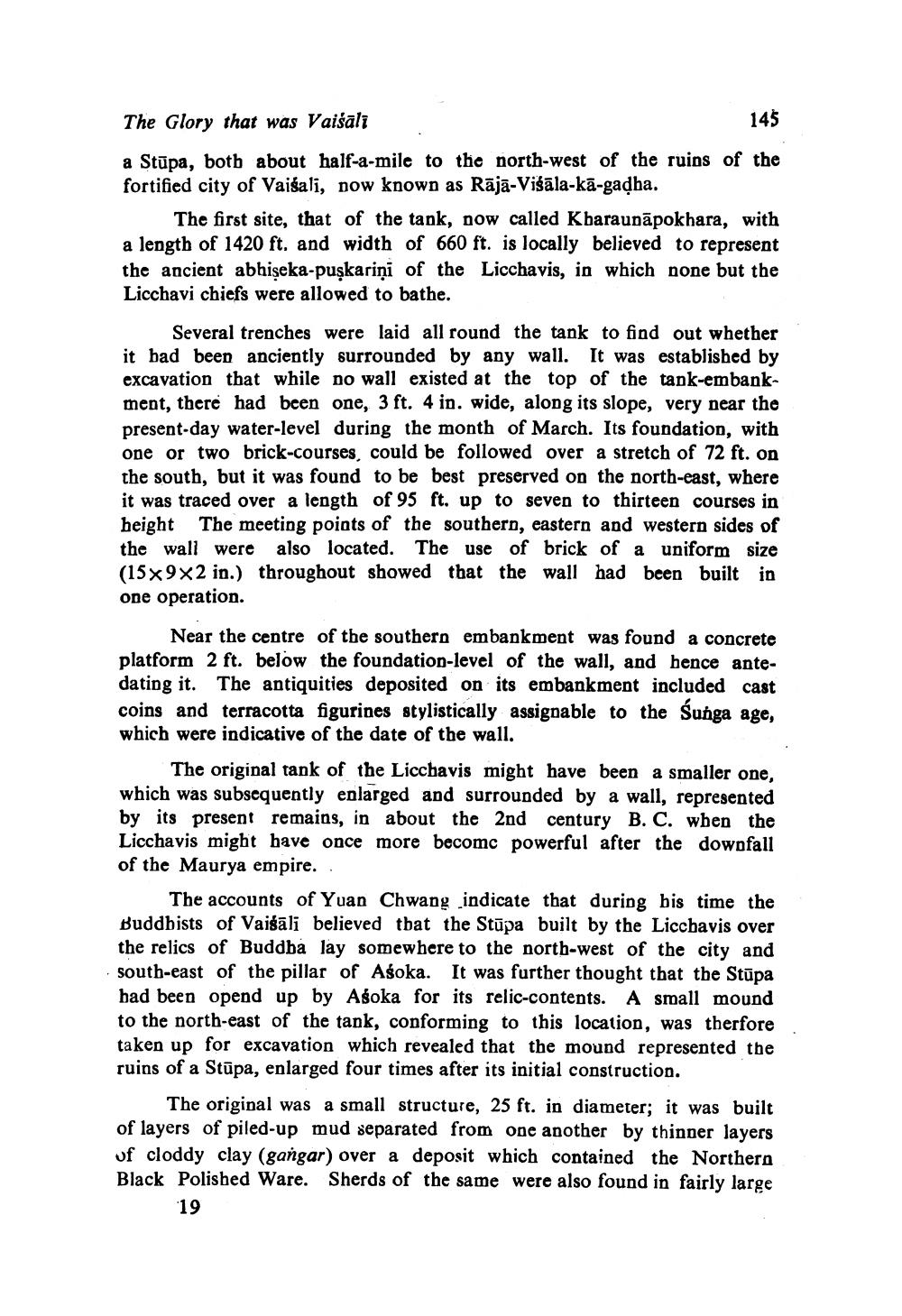________________ The Glory that was Vaisali 145 a Stupa, both about half-a-mile to the north-west of the ruins of the fortified city of Vaisali, now known as Raja-Vigala-ka-gadba. The first site, that of the tank, now called Kharaupapokhara, with a length of 1420 ft, and width of 660 ft. is locally believed to represent the ancient abhiseka-puskarini of the Licchavis, in which none but the Licchavi chiefs were allowed to bathe. Several trenches were laid all round the tank to find out whether it had been anciently surrounded by any wall. It was established by excavation that while no wall existed at the top of the tank-embankment, there had been one, 3 ft. 4 in. wide, along its slope, very near the present-day water-level during the month of March. Its foundation, with one or two brick-courses, could be followed over a stretch of 72 ft. on the south, but it was found to be best preserved on the north-east, where it was traced over a length of 95 ft. up to seven to thirteen courses in height The meeting points of the southern, eastern and western sides of the wall were also located. The use of brick of a uniform size (15X9X2 in.) throughout showed that the wall had been built in one operation. Near the centre of the southern embankment was found a concrete platform 2 ft. below the foundation level of the wall, and hence antedating it. The antiquities deposited on its embankment included cast coins and terracotta figurines stylistically assignable to the Sunga age, which were indicative of the date of the wall. The original tank of the Licchavis might have been a smaller one, which was subsequently enlarged and surrounded by a wall, represented by its present remains, in about the 2nd century B. C. when the Licchavis might have once more becomc powerful after the downfall of the Maurya empire. The accounts of Yuan Chwang indicate that during his time the Buddbists of Vaisali believed that the Stupa built by the Liccbavis over the relics of Buddba lay somewhere to the north-west of the city and south-east of the pillar of Asoka. It was further thought that the Stupa bad been opend up by Asoka for its relic-contents. A small mound to the north-east of the tank, conforming to this location, was therfore taken up for excavation which revealed that the mound represented the ruins of a Stupa, enlarged four times after its initial construction. The original was a small structure, 25 ft. in diameter; it was built of layers of piled-up mud separated from one another by thinner layers of cloddy clay (gangar) over a deposit which contained the Northern Black Polished Ware. Sherds of the same were also found in fairly large 19




